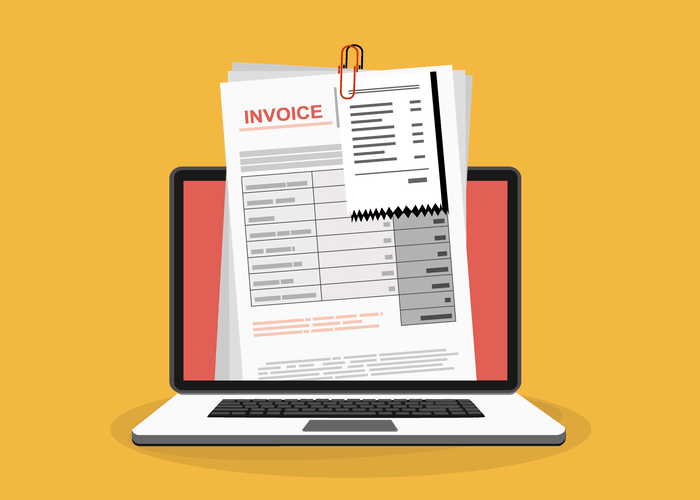
They only state that auditors should reduce the audit risk to an acceptably low level. Hence, auditors’ professional judgment which is based on their knowledge and experience is very important here. Auditors proceed by examining the inherent and control risks of an audit engagement while gaining an understanding of the entity and its environment. The audit risk can be defined as the risk that the auditor will not discern errors or intentional miscalculations while reviewing the financial statements of a company or an individual.
- This is particularly pertinent when audit sampling — a technique widely used to infer the accuracy of financial records — is deployed.
- This risk is also very detrimental from the long term perspective of both, the auditor, as well as the organization.
- The three primary risks – control, detection, and inherent – remain at the core, but the contexts in which they operate are evolving rapidly.
- The higher the assessed levels of inherent and control risks, the lower the acceptable level of detection risk will be.
- Detection Risk is risk of auditors being unable to detect material misstatements in the financial statements of the company.
- It involves carefully aligning the audit’s objectives with the assessed risks, ensuring that efforts are concentrated where they are most needed.
What Factors Can Increase Inherent Risk?
The higher the assessed levels of inherent and control risks, the lower the acceptable level of detection risk will be. Material misstatement risk is the risk that the financial reports are materially incorrect before the audit is performed. In this case, the word “material” refers to a dollar amount that is large enough to change the opinion of a financial statement https://www.bookstime.com/ reader, and the percentage or dollar amount is subjective. If the sporting goods store’s inventory balance of $1 million is incorrect by $100,000, a stakeholder reading the financial statements may consider that a material amount. The risk of material misstatement is even higher if there is believed to be insufficient internal controls, which is also a fraud risk.
- These technologies can predict potential risk areas, ensuring auditors pay special attention to them.
- When the audit is completed it will be based on the wrong numbers, which means that the audit itself will be wrong as well.
- This includes the identification of material audit areas, estimation of resources required, and the intended audit procedures.
- Auditors proceed by examining the inherent and control risks of an audit engagement while gaining an understanding of the entity and its environment.
Understanding and writing the audit planning memorandum (audit plan memo)
Audit risk alerts are intended to provide auditors with an overview of recent economic, professional, and regulatory developments that may affect audits for clients in many industries. Despite best efforts and stringent controls, an audit might fail to highlight pivotal information due to the intricate nature of business operations. The volatility of the business landscape means that an audit’s recommendations might become obsolete by the time they’re published.
What are Audit opinions? 4 Types of Audit Opinions Explained with Example

Understanding an entityISA 315 gives detailed guidance about the understanding required of the entity and its environment by auditors, including the entity’s internal control systems. Given that the focus of this article is audit risk, however, students should ensure that they also make themselves familiar with the concept of internal control, and the components of internal control systems. This type of risk is any that occurs naturally due to a factor other than a failure of internal control. In a financial audit, inherent risk is most likely to occur when transactions are complex or in situations that require a high degree of judgment in regard to financial estimates.
- At certain times, auditors need to tackle these risks by using their professional judgment, as well as their analytical insights to reduce the inherent risk of material misstatement.
- Observation and inspectionObservation and inspection may also provide information about the entity and its environment.
- Such oversights can stem from various factors, like collective contentment from all stakeholders involved.
- For example, the firm just won the new big construction company and most of the audit team member including manager and partner are new to the construction company.
What Are the Three Components of Audit Risks?

The inherent risk cannot be reduced as it is related to the nature of the business and transaction itself. Hence, auditors can only assess whether it is high, moderate, or low and plan the audit procedures accordingly so that overall audit risk can be minimized. The first audit assignment is also inherently risky as the firm has relatively less understanding of the entity and its environment at this stage. For example, control risk is high when the client does not perform bank reconciliation regularly.
Audit risk is a function of the risks of material misstatement and detection risk’. Hence, audit risk is made up of two components – risks of material misstatement and detection risk. Audit risks can be defined as the risk that the auditor expresses as an appropriate audit opinion when the financial statements are not representative of the actual financial condition of the company. Audit risk is defined as a function of the risks of material misstatement and well as detection risk. Therefore, audit risk is known to have two broad components, which include risk of material misstatement and risk of detection.
These types of audit risk are dependent on the business, transactions and internal control system that the client has in place. Analytical proceduresAnalytical procedures performed as risk assessment procedures should help the auditor in identifying unusual transactions or positions. They may identify aspects of the entity of which the auditor was unaware, and may assist in assessing the risks of material misstatement in order to provide a basis for designing and implementing responses to the assessed risks.
Introduction to the Audit Risk Model
The more complex business transactions are, the higher the inherent risk the client will have. Responses are not as detailed as audit procedures; instead they relate to the approach the auditor will adopt to confirm whether the transactions or balances are materially misstated. Therefore, audit risk model in relation to the risk of going concern, the response is to focus on performing additional going concern procedures, such as reviews of cash flow forecasts. Misapplication or omission of critical audit procedures may result in an undetected material misstatement by the auditor.
